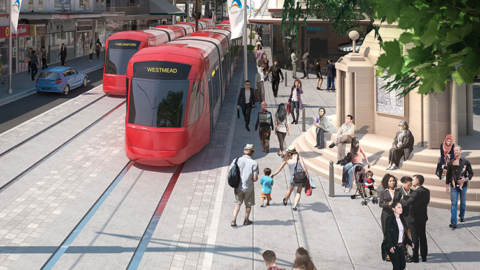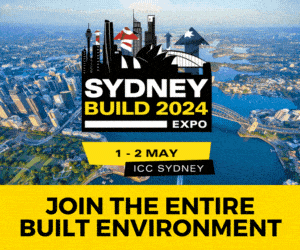The Westport Taskforce Steering Committee has announced its shortlist of five strategies for the long-term management of Western Australia’s growing freight needs. The shortlist includes three standalone options for Kwinana Port and two shared Fremantle/Kwinana options.
The Westport Taskforce was established in 2017 by the WA Minister for Transport to inform future governance on port trade over the next 50 years and beyond.
After conducting extensive consultation and research throughout 2018-9, the Taskforce developed a ‘long-list’ of 25 options was based on research and information, including historical data about container ports and Fremantle Ports, the latest port and freight innovations and modelling by both government agencies and the private sector.
To determine the best options among the 25, the performance of each was tested across a range of important criteria shaped by community consultation and stakeholder feedback. This process – known as a multi-criteria analysis – allowed all of the options to be ranked in terms of how they best meet the long-term freight needs of Western Australia.
The first multi-criteria analysis (MCA-1) has now been completed and the top five shortlisted options are:
- A land-backed conventional port in Kwinana
- A shared-port option featuring Kwinana and Fremantle
- Another shared-port option employing a possible new mode of container transportation with the Blue Highway barging concept
- An innovative new light footprint port in Kwinana that utilises Latitude 32 as an IMT
- A conventional island port in Kwinana
1. Standalone conventional land-backed port at Kwinana
Kwinana Option 23 was the top-ranked option in MCA-1. This option is a standalone conventional land-backed port handling the full forecasted container task of 3.8 million TEU (twenty-foot equivalent unit). It has an intermodal terminal (IMT) as part of the port precinct and is more reliant on road transport over rail.
The port extends along the coastline between the Kwinana Bulk Terminal and the Alcoa jetty. It is serviced by an extended Anketell Road that connects through to Tonkin Highway, and a rail track duplication between the Cockburn Triangle and Kwinana Industrial Area.
This option was strong across all criteria and topped the rankings regardless of which criteria were given the highest weighting.
The option scored highly on all criteria, except land availability and beach access/use. It has good land transport connections and low environmental impacts in comparison to other options. Its tried-and-tested conventional port design will present fewer challenges, and it frees up Fremantle for alternative use.
However, connecting the last kilometre of Anketell Road and the rail line through to the port may be challenging, given existing land holdings and infrastructure in the area. The port will also displace the Kwinana horse beach, and hydrodynamic impacts on Cockburn Sound still to be thoroughly tested.
2. Shared Fremantle/Kwinana port scenario
This strategy involves a shared port scenario. Kwinana Option 24 and Fremantle Option 2 were the highest-ranked shared-port option and the second-highest-scoring option in MCA-1.
The Kwinana port component is essentially the same design as Option 23, but with a slightly smaller port footprint as it would handle the freight task in partnership with Fremantle. It has an IMT as part of the port precinct, is reliant on roads over rail, and is serviced by an extended Anketell Road and duplicated rail track between the Cockburn Triangle and Kwinana Industrial Area.
The Fremantle component (Option 2) is the existing Inner Harbour footprint but with some additional road, rail and operational enhancements.

Kwinana Bulk Jetty. Credit: Fremantle Ports.
3. Shared-port scenario with Blue Highway concept
This dual-option – Fremantle Option 2 and Kwinana Option 24 – is the same as the second-ranked option except it incorporates the Blue Highway concept of transporting containers from Fremantle to Kwinana on shallow draught barges.
This scenario has been included in the shortlist to allow Westport to thoroughly investigate the viability of the Blue Highway – which is a common method of transporting containers upstream in other countries – for this particular scenario.
For the purposes of MCA-2, the Blue Highway concept will be tested as an end-state. However, it is more likely feasible as a temporary mode of transporting containers from Fremantle to Kwinana during a transition phase, due to its low capital cost requirements.
The Blue Highway concept proposes containers being moved directly from the large container ships onto small barges using specially-designed loading equipment. The barges would then transport the containers directly down to the Kwinana port for off-loading onto trucks.
A benefit of the Blue Highway is that less dredging may be required due to the shallower depth of the barges.
The intermodal facility on the Kwinana port would allow for containers to be shifted directly from the barge gantry onto trucks, as shown in Image 1 (top right). This would save
on time and infrastructure costs.
For additional investigation is whether the shipping conditions along the coast of Perth may require a breakwater to be built to protect the barges and container transfer operations. Further, the operational costs of this option are likely to be high given the requirement to invest in specialised equipment and barges.
4. Light footprint standalone port at Kwinana
Kwinana Option 11 is a standalone option handling the full 3.8 million TEU container task. It has a physically smaller footprint than a conventional port as the IMT operations are decoupled and located in a separate area – in this instance, at Latitude 32.
The theory is that a narrower port will have better marine environmental outcomes, however this concept is relatively new for container ports and must be further tested. Containers would be moved to or from the ship via Automated Guided Vehicles (AGV) that transfers them over a 4km ‘land bridge’ to the IMT at Latitude 32, where they are then transferred to trains or trucks.
This option is located in the north of Cockburn Sound. It will be serviced by an expanded Rowley Road linking directly through to Tonkin Highway, and a freight rail duplication between the Cockburn Triangle and the Kwinana Industrial Area.
It connects to land immediately south of the Naval Base shacks and extends south-west into Cockburn Sound past the Alcoa jetty utilising the existing channel. Ships would enter and leave the port from the south.
5. Standalone conventional island port at Kwinana
In Kwinana Option 14, this port could handle the full 3.8 million TEU with an IMT facility as part of the island port precinct. The port connects to land adjacent to the Kwinana Industrial Area and the island extends north-westerly in Cockburn Sound towards the Alcoa jetty. Ships enter the channel from the north.
This port is mainly road-reliant and serviced by an expanded Anketell Road, but also requires a duplicated freight rail track between the Cockburn Triangle and Kwinana Industrial Area.
What criteria were used to assess the options?
With the benefit of input from stakeholders, a list of assessment criteria was identified that would assist in separating and emphasising the differences between the options, and help determine a clear ranking.
The purpose of MCA-1 was to:
- Measure how well the options performed against ranking across all criteria the essential components that make up a successful port and supply chain
- Highlight the strengths and weaknesses of each option
- Test each option’s reliance on just one or two areas of strength – rather than an acceptable or high ranking across all criteria – by conducting sensitivity testing
- Allocate scores which would allow the top-ranked options to be taken forward to the next stage of testing

Fremantle Harbour. Image credit: Tourism WA.
Ranking the options
To apply the assessment criteria to the 25 options to determine their scores and ranking, Westport held more than 16 hours of workshops with subject matter experts.
For every option, a score of one-to-five was assigned for each criterion; one being the worst performing option and fve the best performing option (with at least one best- and worst-performing option assigned for every criterion). This allocated the options a final score out of 500 points.
Surprisingly, a stand-alone Fremantle option did not make Westport’s shortlist. The Taskforce found that, contrary to popular belief, a strategy involving an existing port is not necessarily the cheaper option.
The high cumulative capital costs, concerns over the long-term sustainability and scalability and large levels of social impact meant that the two standalone Fremantle options in Westport’s long-list (Option 1 and Option 3) performed poorly in the MCA-1 ratings when assessed against other options. Consequently, these two options will not proceed any further in Westport’s process.
Similarly, while Bunbury Port does not feature in the shortlisted options, the Taskforce identified plenty of opportunities for future growth and expansion. Westport found that growing the local container task may eventually lead to the critical mass required to establish a niche stevedore operation at the port.
Establishing a container operation at Bunbury Port would encourage large industries to operate in the area – especially with such an abundance of industrial land available close to the port. Facilitating industrial development could also spur social and economic development for the region as it would create skilled job opportunities for locals and bring more people to the area for work purposes.
The future of Westport
This shortlist will now go through a second, even more rigorous multi-criteria analysis (MCA-2) and a cost-benefit analysis to determine the strongest option. This work will form the basis of Westport’s recommendations for managing Perth’s expanding freight task long-term.
Westport is scheduled to provide a final recommendation (or most and second-most preferred options) to the WA Government at the end of 2019.
Read Infrastructure’s interview with Nicole Lockwood, Chair of the Westport Taskforce. View more information on the five shortlisted options here, and a complete long-list of 25 options here.















